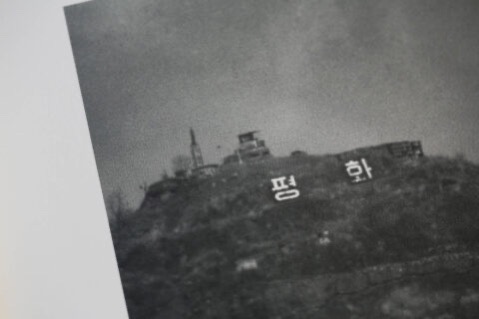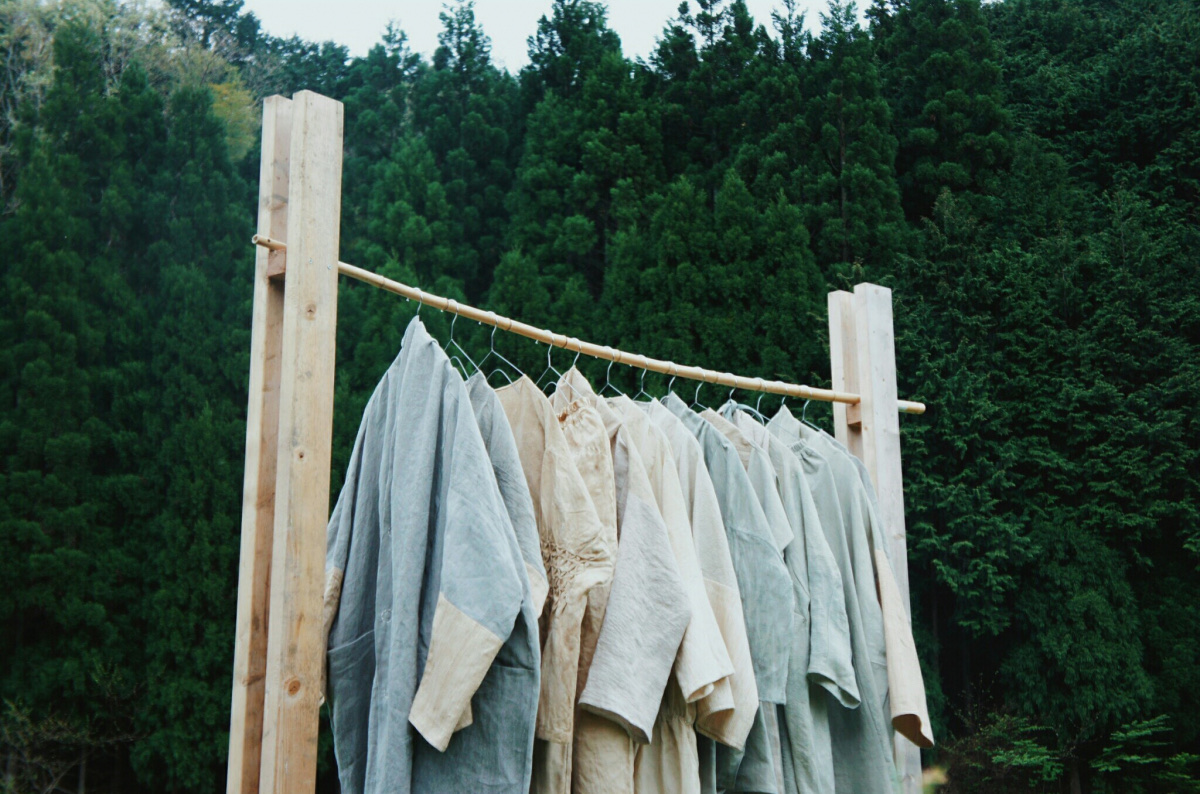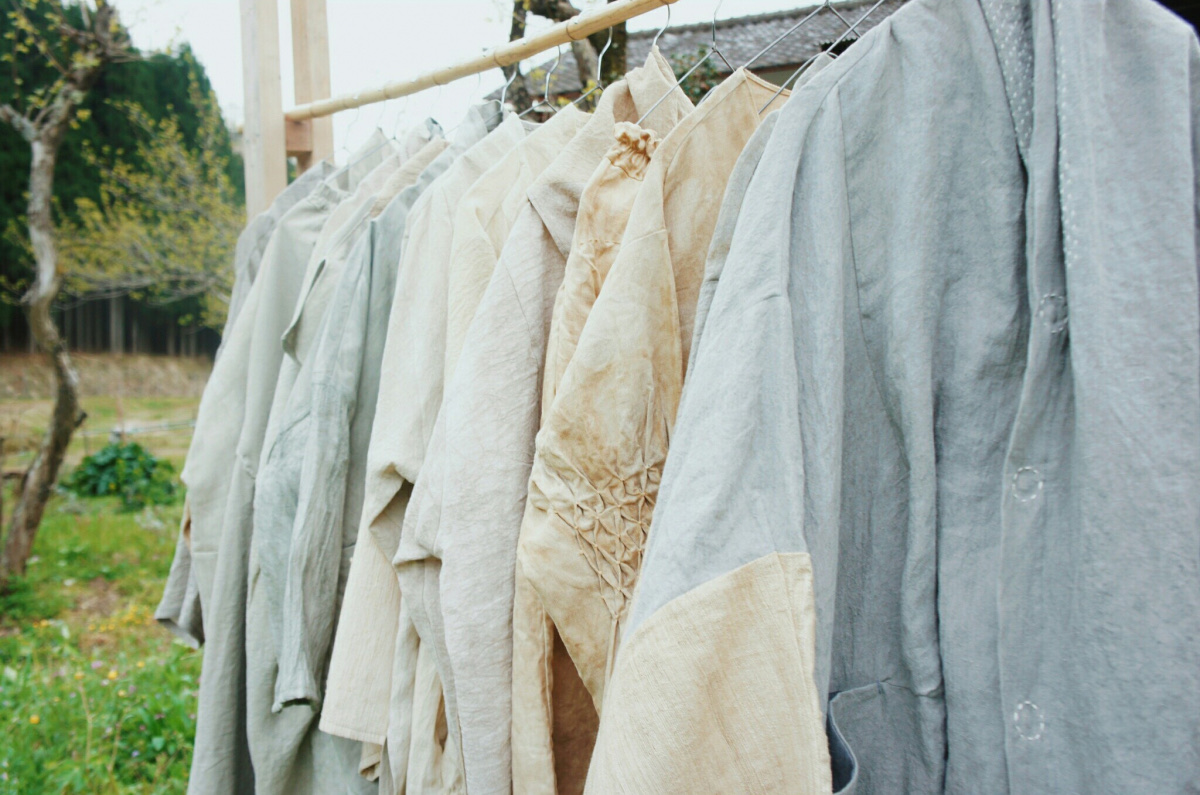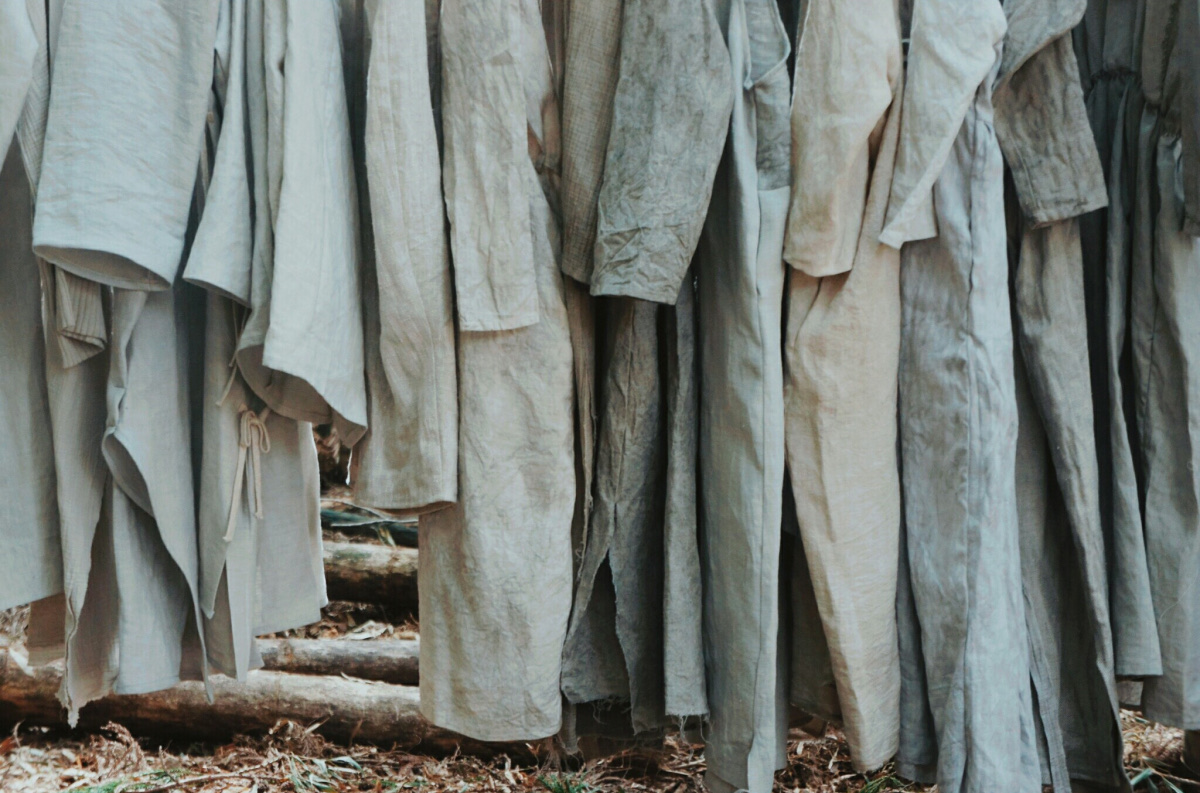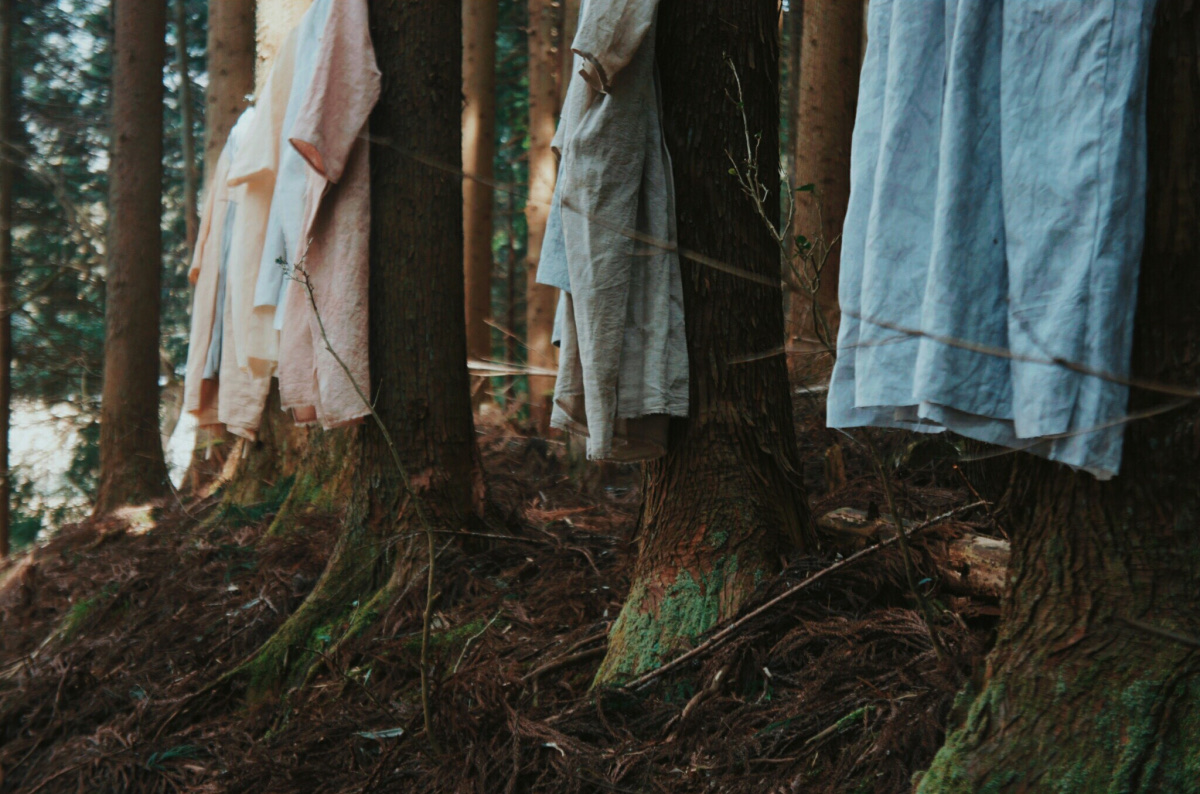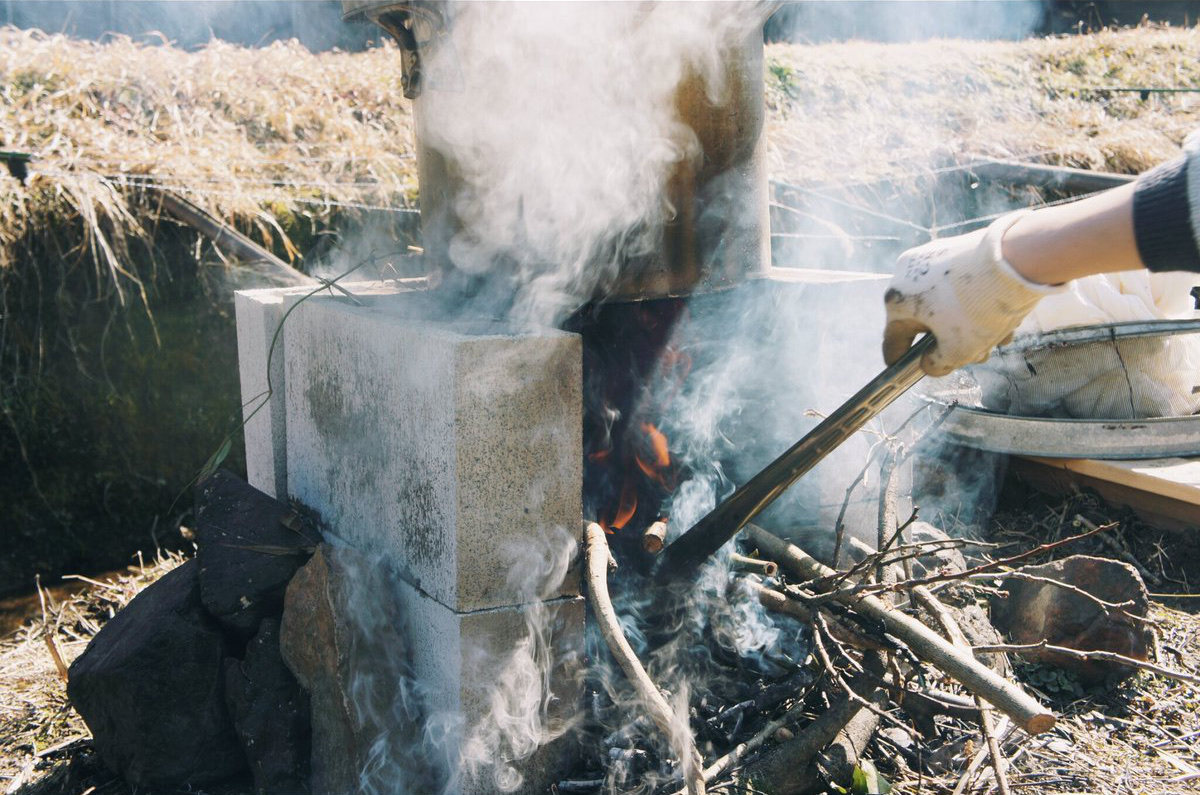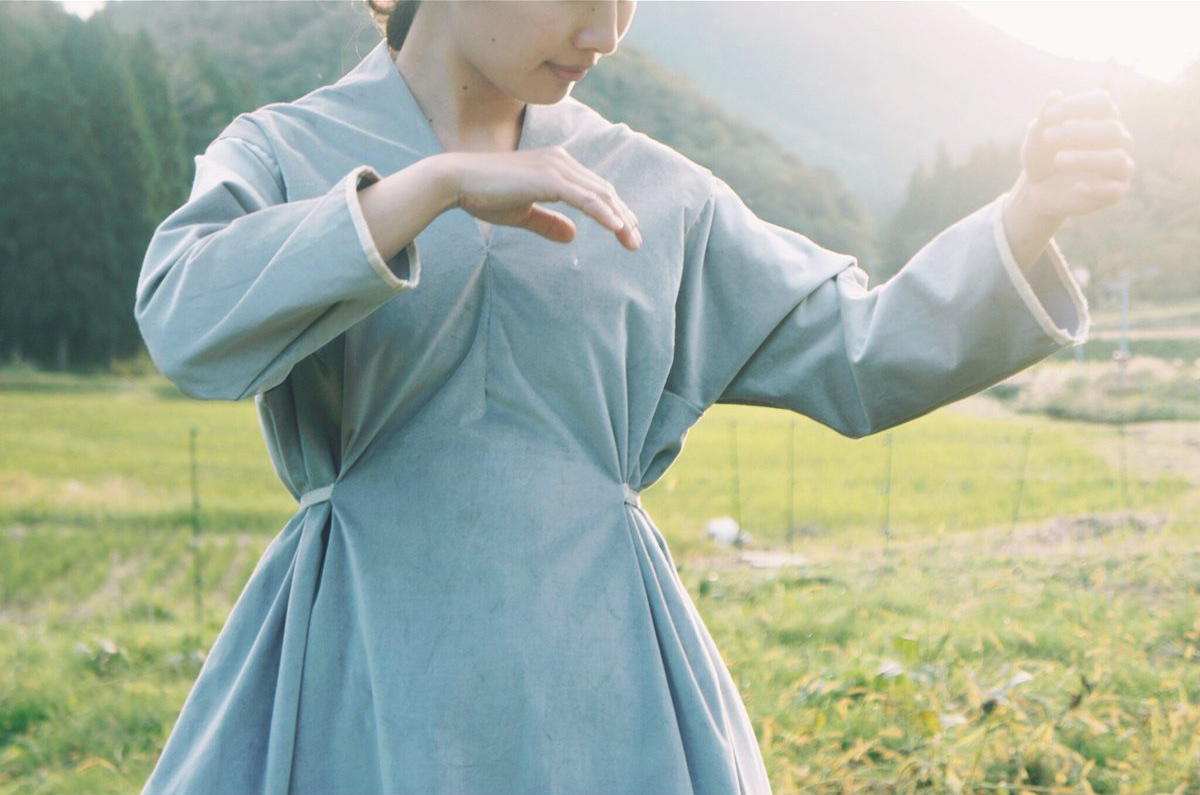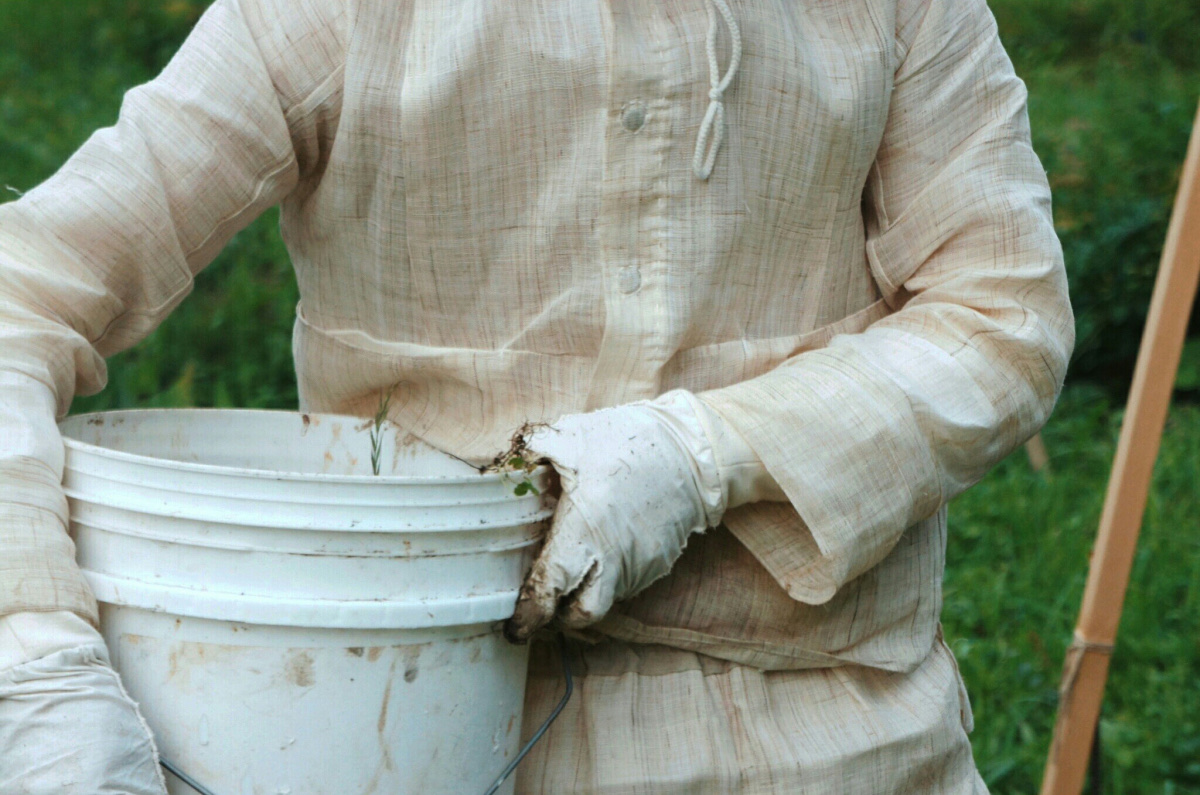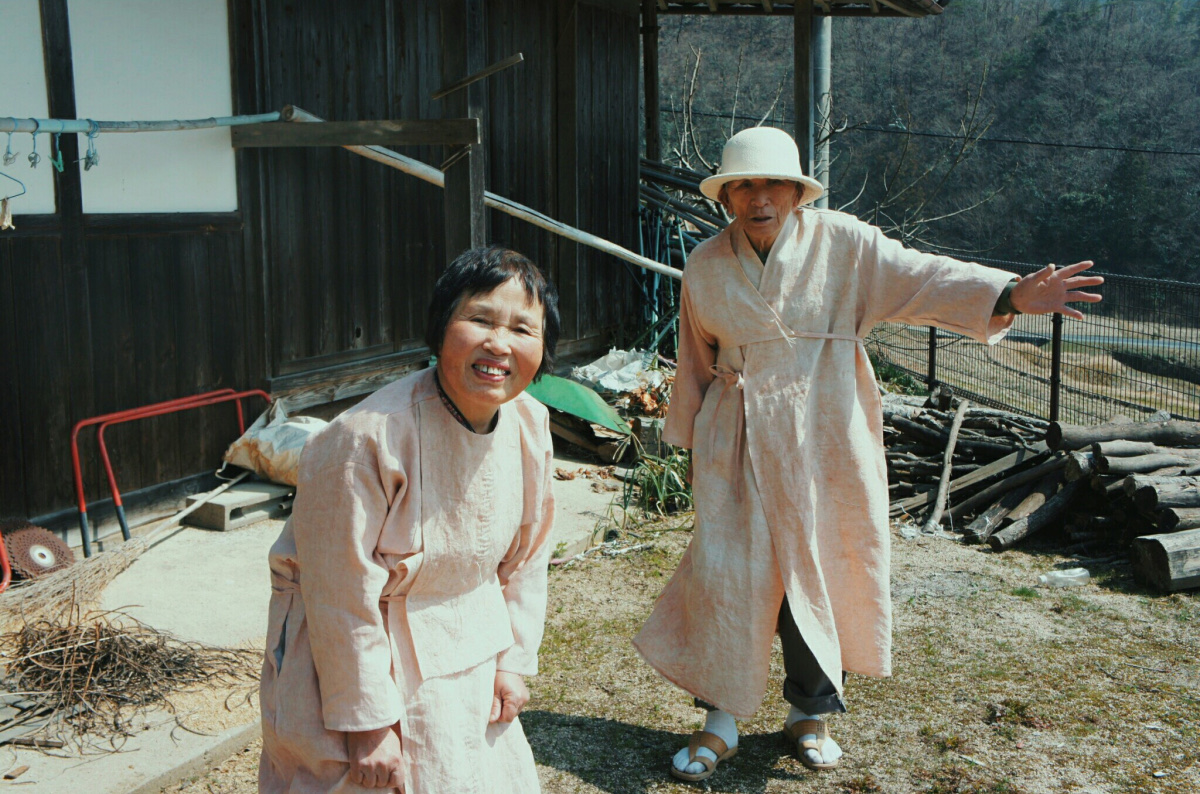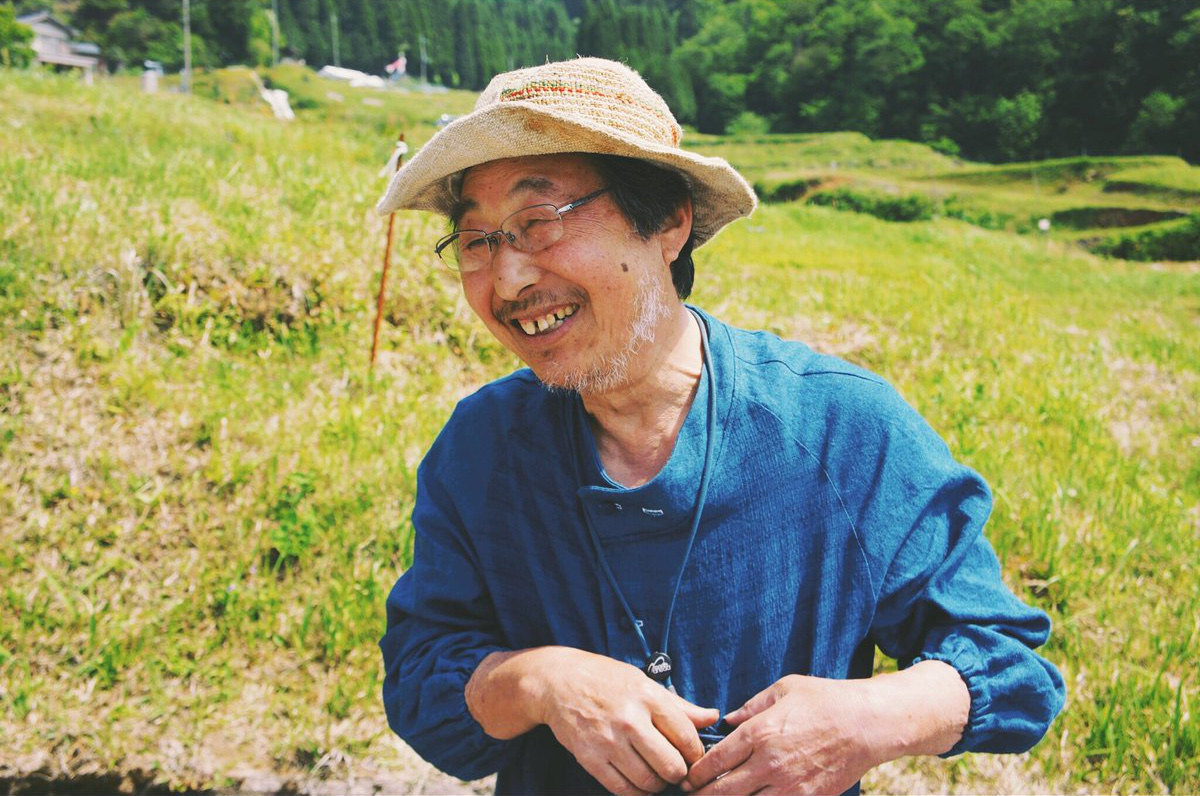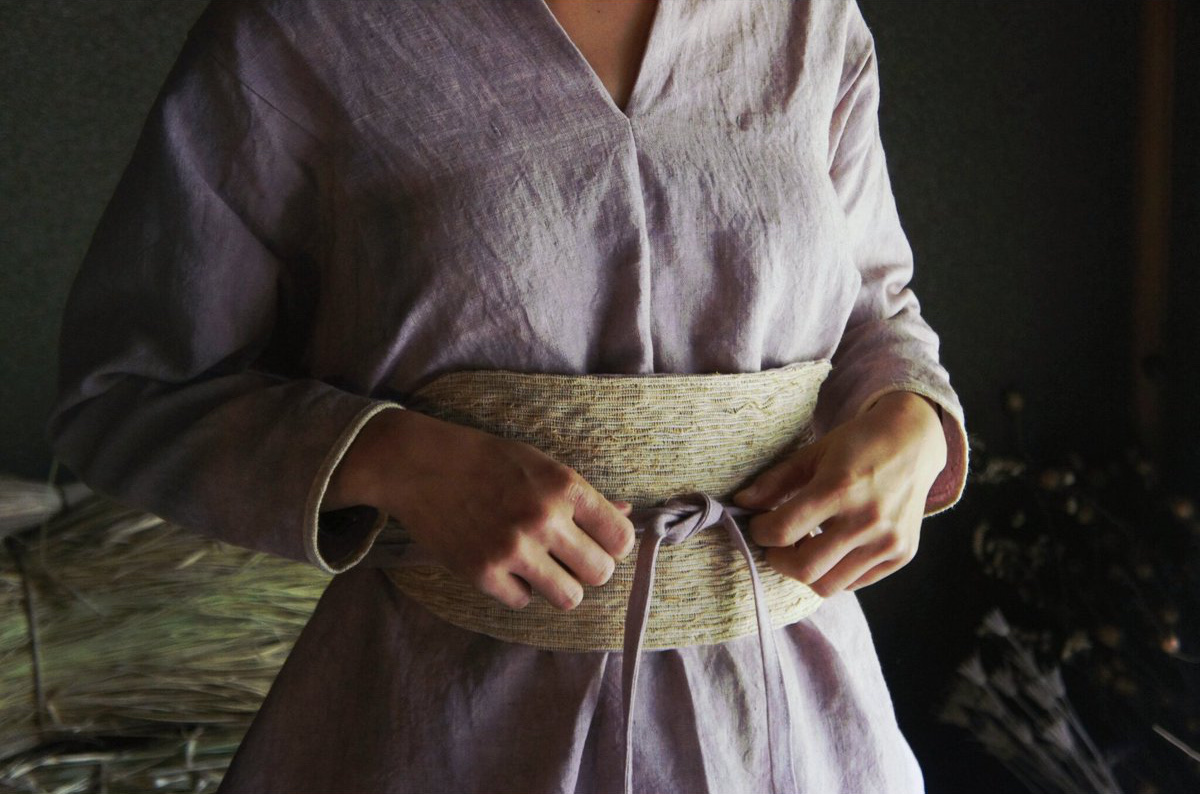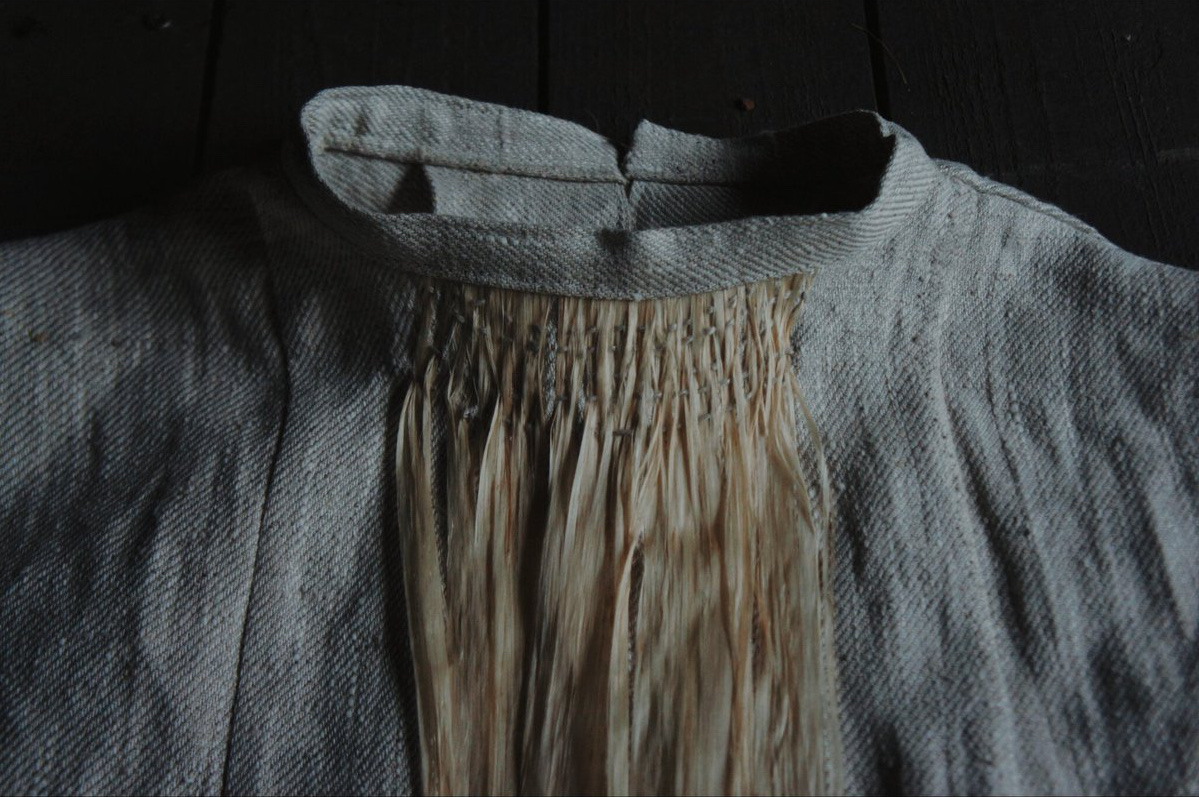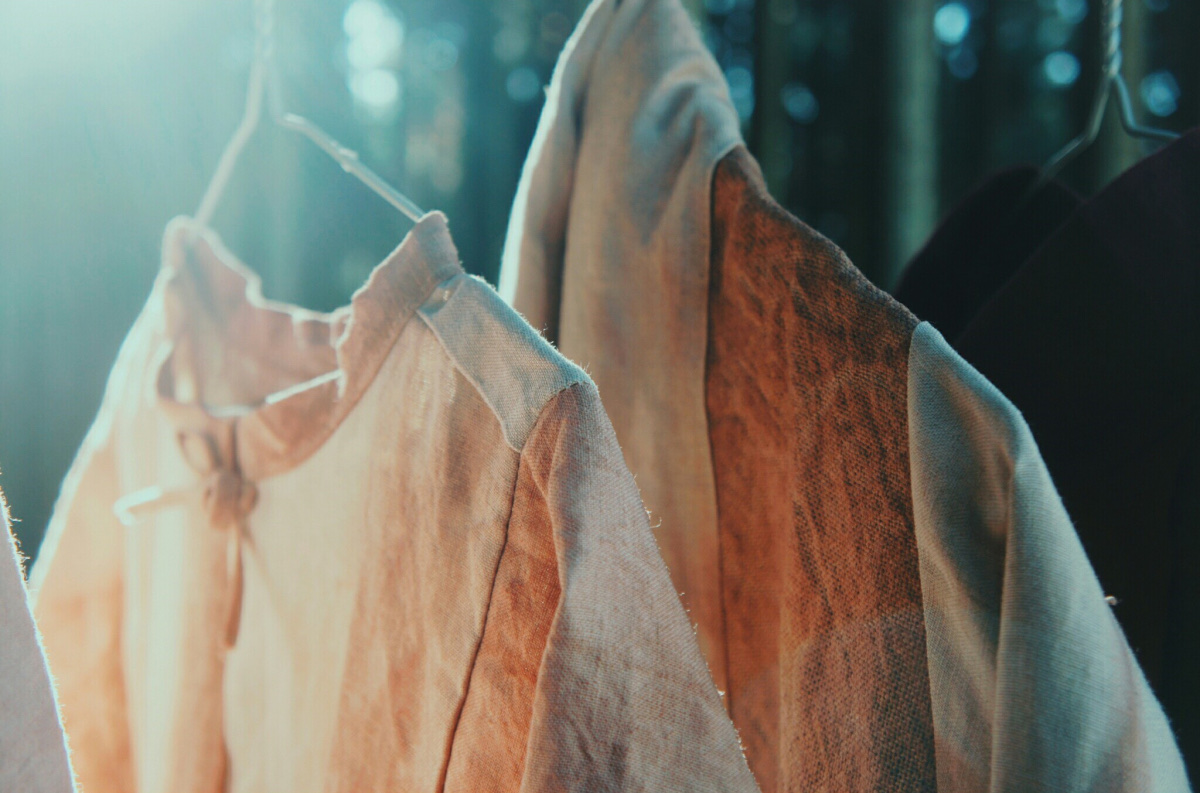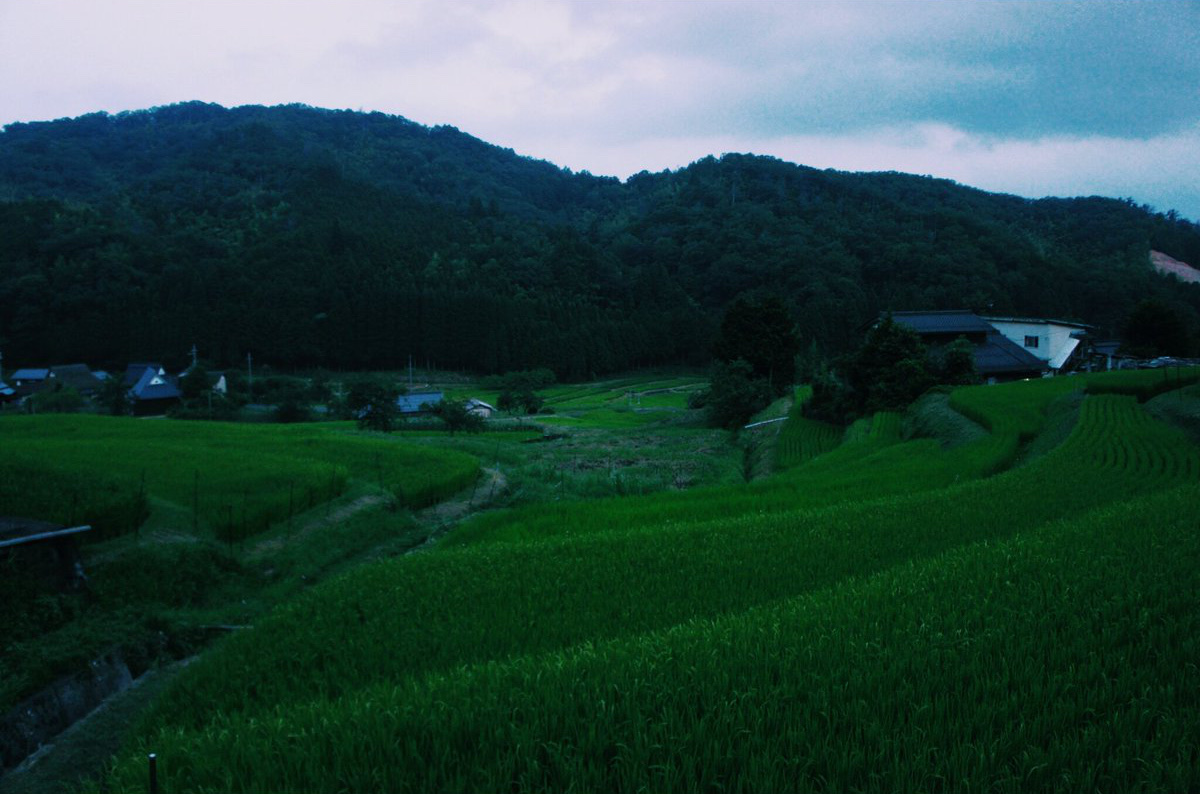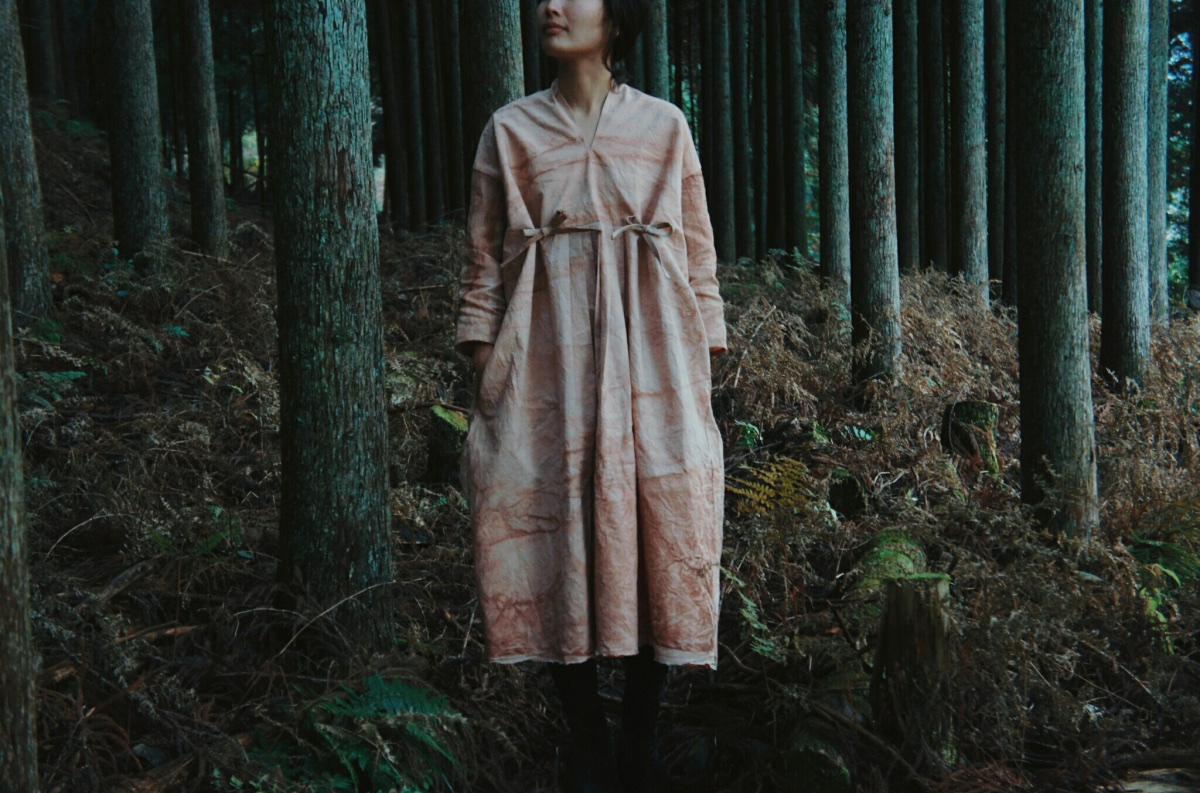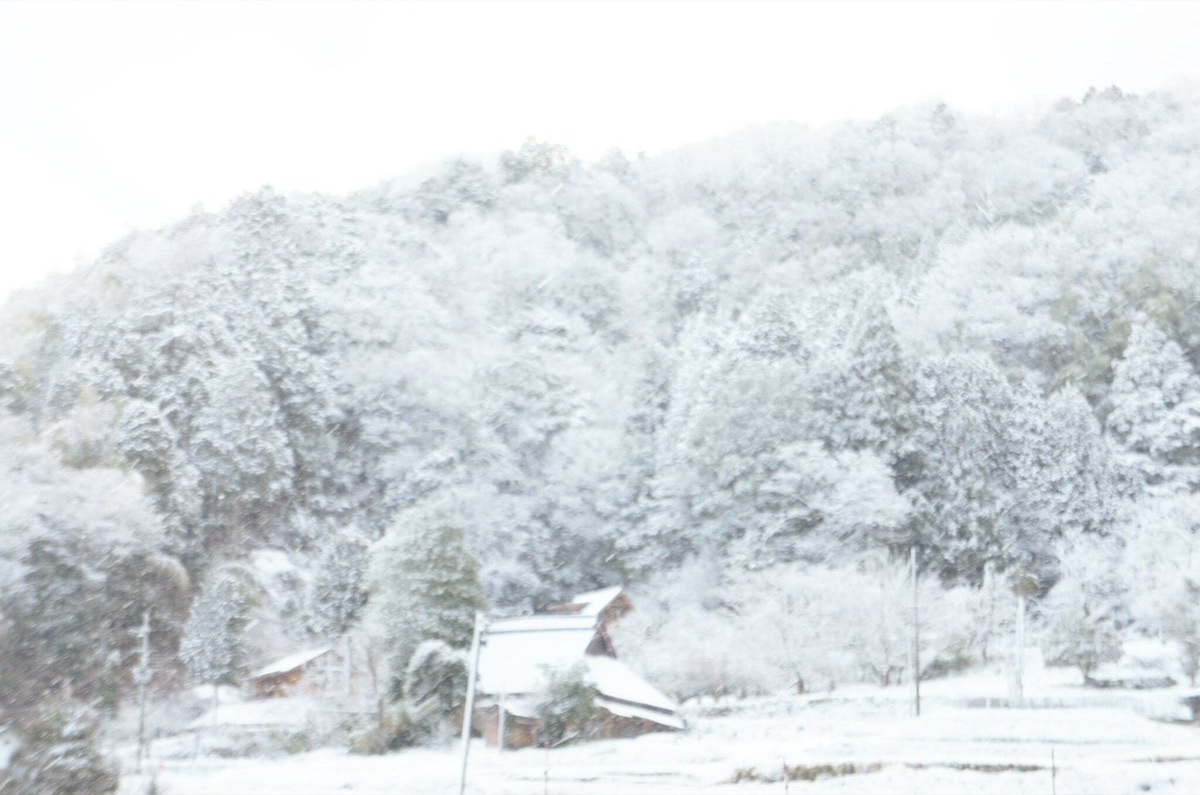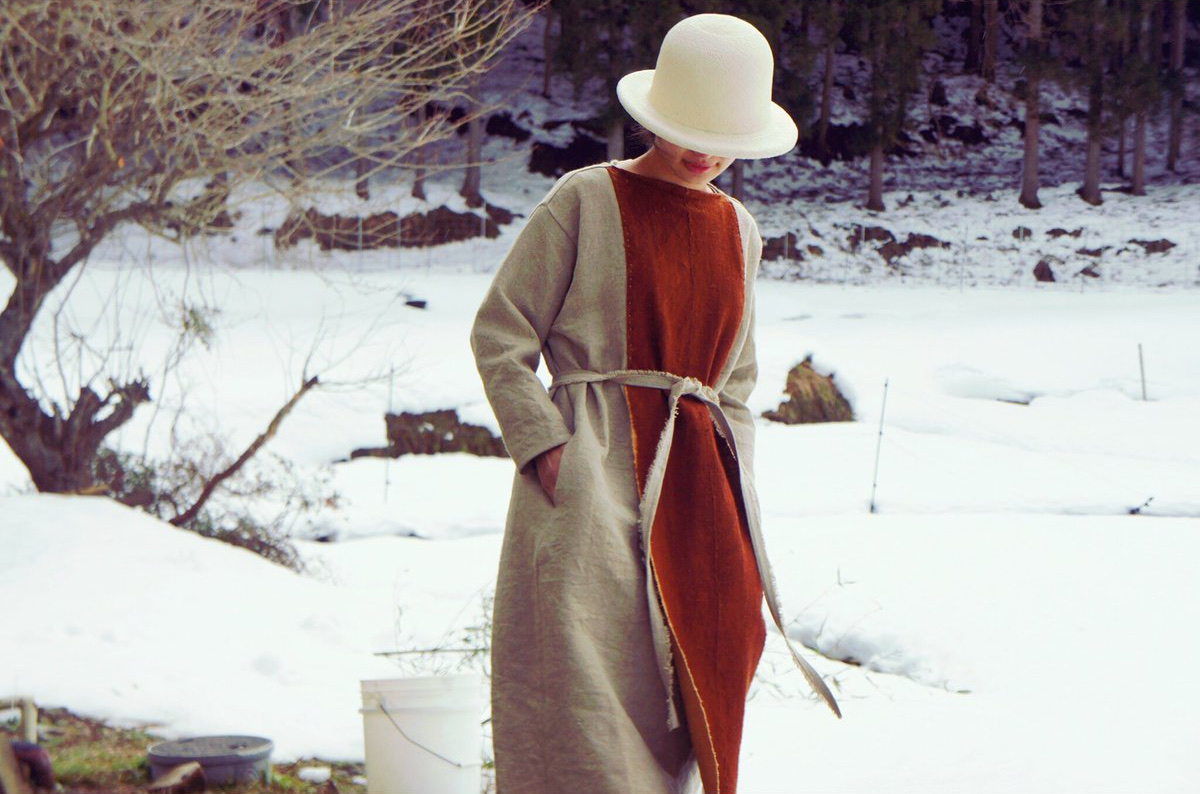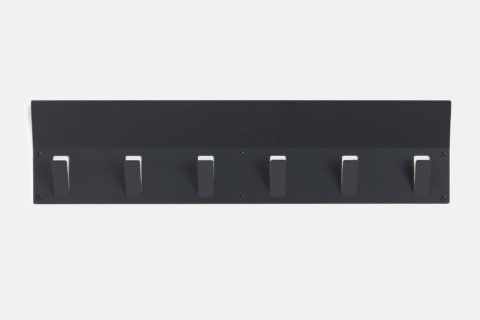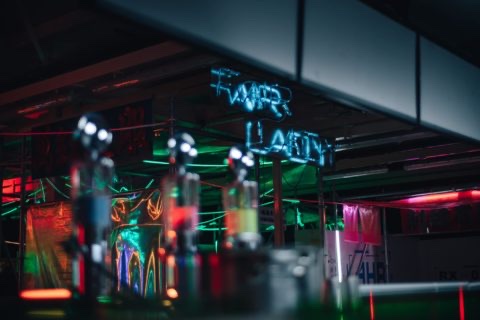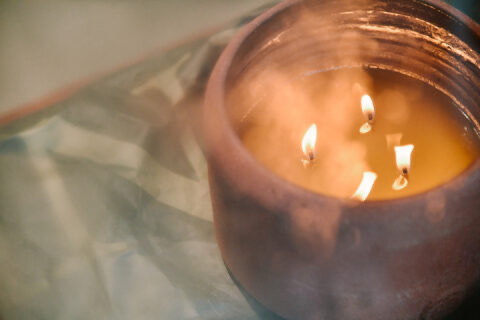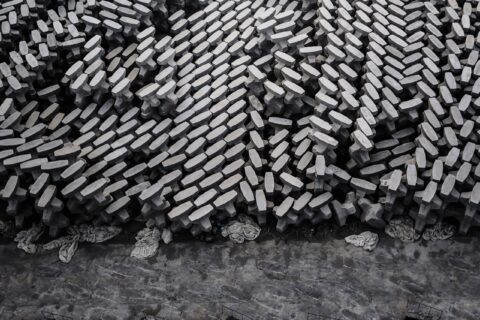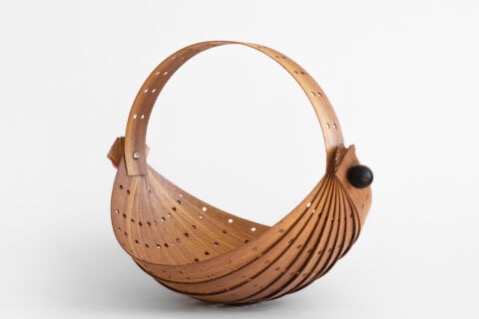燒開柴火,葉子浸泡出泛藍的水,或紅帶紫,或素淨的灰和杏,詞彙再多都不夠形容眼前廣闊的色相,是山是水是風和雨和豔陽,也是草木之色。從村裡採摘的植物熬成染料,他在屋前的小溪將布洗擦。一只小白山羊守候在旁邊。
Bring a pot of water to boil on the burning firewood, the leaves in water would release different colors like blue, red, purple, grey, khaki, or even some unique colors that you have no idea how to call them. These are pots of vibrant colors that represent the mountains, water, wind, rain, the sun, or plants. Taiki Iai uses plants he picks up from his nearby areas to make the dyes, then he would go to the stream in front of his house to wash the textile. While he is at work, his little white goat would quietly keep him company.
居相大輝,1991年生於京都。曾是消防員的他,在311大地震時被派往仙台救災,眼見無數生命流逝,他反覆問自己,如果是他,他會怎樣。想到從小長大的地方有天可能也會失去,腦海裡家鄉的風景清晰浮現。於是他辭去了工作,與妻子搬回福知山市居住。
在距離京都站兩小時的火車車程,一個群山環繞的山村。他把一所逾百年歷史的農舍翻新,改建成家與工作室,並在旁邊的土地上種菜。在經歷地震後,他決定以後只專注眼前的生活。「我也想通過造衣服來過活。」自小對衣服很感興趣的他,上小學的時候對女性服飾特別好奇,常在鏡前擺弄母親與祖母的衣飾。仍在當消防員的時候,宿舍位於澀谷,每到假日他會穿著自己喜歡的衣服去原宿,常被街拍採訪。19歲的時候他買了第一台縫紉機自己翻新衣服。但真正開始製作服裝,是在返回家鄉之後。
Taiki Iai was born in Kyoto in 1991. During his days as a firefighter, he was sent to Sendai for a rescue mission when the powerful earthquake and tsunami hit Japan in 2011. Witnessing so many lives gone vanished, he could not stop imagining what would happen if it was him who had to face the adversity. Scared by the powerful impact of natural disaster, Iai could not stop thinking about his hometown. After that, he quit his job and moved back to Fukuchiyama together with his wife.
Iai’s hometown is a mountainous area two hours away from Kyoto station by train. He renovated a farmhouse that was built over a hundred years ago and turned it into his home/atelier, next to his house is farmland where he grows vegetables. After the 2011 earthquake, he has decided to focus only on the immediate future. “I also wanted to develop a career as a tailor,” said Iai, who has always been interested in making clothes ever since he was a child. He was particularly curious about women clothes when he was in primary school. He would dress himself up in his mother’s and his grandmother’s clothes in front of the mirror. He used to live in a firefighter dormitory in Shibuya. During weekends, he would put on his favorite clothes and spend his time in Harajuku; there were quite a few times where he got invited for street snaps. Although Iai has already bought his first sewing machine at the age of 19 years old for remaking his clothes, he never tried making clothes from scratch until he returned to his hometown.
現在屋前的農地上,有一間染布小木屋。也是因為回到山裡居住,才研究起草木染。「在村子裡散步時,會看見很多生命力,山脈的顏色、梯田裡麥穗金黃搖曳的身影、鮮花與傍晚的天空。同一片風景每天都有不同的呼吸。」如此看著,心是會隨著動的。「大自然的呼吸真的很美,我覺得它會為衣服增添色彩。」因著氣候濕度與水源,每次染上的都是變幻無垠的景色。
他又為村民製作每個人獨一無二的衣服,村裡的爺爺奶奶們,穿著它去下田種菜,衣服都沾染上生活斑痕。在辛勞過後的灰頭土臉上,他能看到在生活裡沉迷其中的人身上所散發的色彩,一個個都充滿生命魅力。
In the farmland facing his house, Iai built a small wooden hut specifically for textile dyeing. After returning to the mountains, he began to explore natural plant-based dye. “Taking a stroll in the area, I can see beautiful things looking lively everywhere. The colors of the mountain, the golden wheat dancing in the terraced fields, the flowers and the sky at twilight… Everything has its unique pattern of breathing,” said Iai. One’s mood can be easily affected by what they are seeing, “The vibe of nature is enchanting, I believe it can bring more colors to clothes.” The dyes all come from natural resources. As a result, the color has numerous variations depending on the change in humidity, water quality, and other changes in the climate.
Another project of Iai is to tailor-make clothes for the villagers, so that the old farmers can wear them while working in the field. Their clothes are worn-out due to the heavy usage, but the dirt is accurately reflecting the beauty of the energetic and hardworking farmers.
「造衣服和染色我都很直接。我不覺得自己是用腦袋去思考怎樣做,而是經常在雙手移動間想到要怎樣做,所以我不畫紙樣。」早上醒來,他會透過觸摸去觀察布料當天的表情,再把布掛在身上,身體自會了解穿著時的感覺,然後便裁切下來開始縫製。到中午時分休息,下午在田裡幹活、與妻子女兒活動直到日落。沒有造衣服的技術根底,然而認真生活,把日常的吉光片羽訴諸衣服,便成了他無可取代的技藝。
「我意識到生活就像衣服一樣。」
居相,在中文裡不剛巧就能解作:生活的場所,它的模樣。
“I never overthink when making or dyeing clothes. Instead of using my brain to think, I simply let my hands guide my thoughts. Therefore I never draw patterns.” Waking up in the morning, he would use his hands to feel the texture of the textile, and then he would hang the cloth on his body to get an idea of how it feels wearing them. Afterward, he would begin cutting the fabric and start sewing. It is his regular resting time at noon, then in the afternoon, he would go to the field to work together with his wife and children until sunset. Without formal training in textile, but Iai, who is a keen learner, managed to apply his everyday life experience to cloth-making. His genuine passion for life has become an invaluable skill set that he owns.
“I came to realize the similarities between life and clothes.”
The family name of Iai (also his brand name) is written as 居相 in Chinese, which means the look of one’s home. The clothes made by Iai, coincidently, are a reflection of how people look in their most homey environment.
